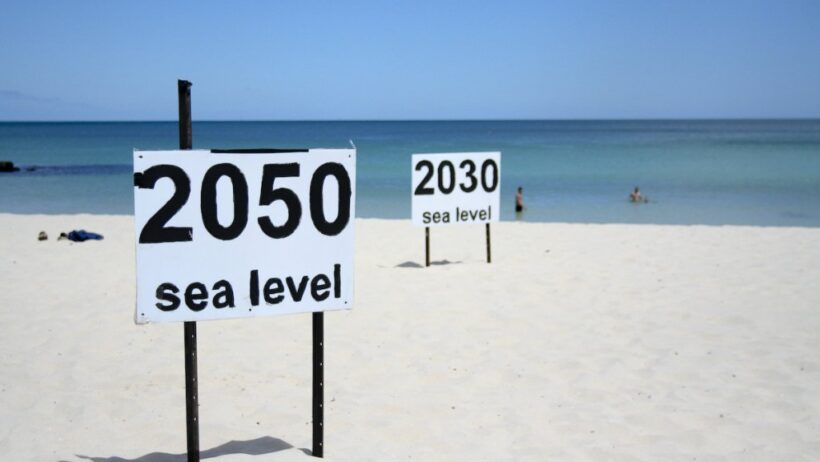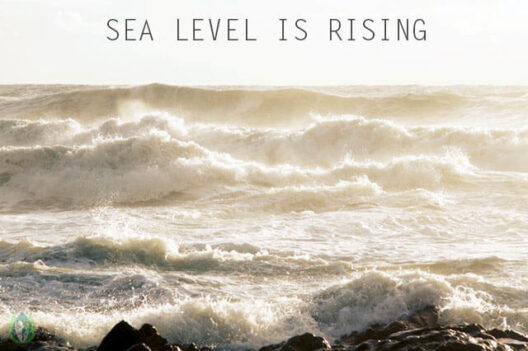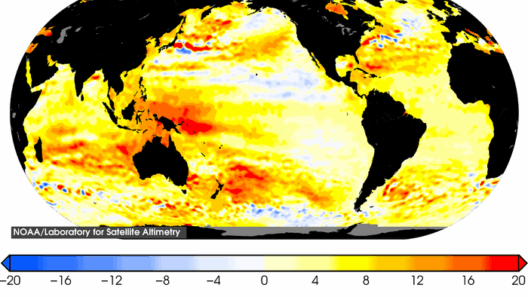The discourse surrounding sea-level changes engenders diverse perspectives, often steeped in confusion. Is the sea level indeed rising, or are there regions where it appears to be falling? Analyzing this phenomenon requires a multifaceted approach, incorporating geographic, climatic, and oceanographic variables. By dissecting the complexity of sea-level trends, we can arrive at a nuanced understanding of this pressing environmental issue.
To grasp these trends, we must first recognize that sea level fluctuation is not a uniform global experience. This global challenge manifests through localized variations driven by distinct factors: thermal expansion of water, glacial melt, land subsidence, and oceanic currents, to name a few. Such intricacies render the notion of a global average sea level somewhat misleading.
In this exploration, we will examine the evidence corroborating sea-level rise, the misconceptions that have led to confusion, and the implications of these changes on human populations and ecosystems.
The Reality of Rising Seas
Over recent decades, extensive research has unequivocally demonstrated that global sea levels have been on an upward trajectory, primarily attributable to two interlinked phenomena: the thermal expansion of seawater and the accelerated melting of glaciers and ice sheets due to climate change. When water warms, it expands, which inherently increases volume. Simultaneously, the ice masses in Greenland and Antarctica are shrinking at alarming rates, siphoning substantial quantities of freshwater into oceans.
The Intergovernmental Panel on Climate Change (IPCC) reports that, since 1900, average global sea levels have risen by approximately 20 centimeters (about 8 inches), with predictions suggesting an acceleration in this trend. By the end of this century, sea levels could rise by an additional one to two meters, undermining coastal infrastructure and inundating low-lying regions. This alarming projection necessitates immediate consideration from urban planners and policymakers alike.
Confounding Factors Influencing Local Variability
While global trends indicate a rising sea level, certain coastal areas may experience localized phenomena that suggest a relative decline in sea height. These inconsistencies stem from various dynamic factors.
One major factor is land subsidence, which can occur due to natural geological processes or human activity. In cities like New Orleans, the ground is sinking faster than the surrounding sea is rising, creating an illusionary effect of falling sea levels. Additionally, areas where sediment deposition is high may experience rising land, thus negating some effects of sea-level rise.
Another localized variability comes from ocean currents and atmospheric conditions. Shifts in the distribution of warm and cold water can lead to temporary decreases in sea levels in some regions, creating confusion about global trends. El Niño and La Niña events, for example, can elevate sea levels intermittently across different geolocation thresholds.
Understanding Regional Impacts: Case Studies
To elucidate how these trends manifest on a regional scale, we will examine a few notable case studies that highlight the heterogeneous nature of sea-level changes.
In the North Atlantic, cities like Miami face dire projections. With a combination of high land subsidence and rapid ocean warming, the area is projected to see up to 2.4 meters of sea-level rise by 2100 if current trends persist. The ramifications include increased flooding, saltwater intrusion into freshwater aquifers, and substantial risks to local ecosystems. On the opposite coast, a rise in sea level in San Francisco is compounded with a natural uplift of the land, presenting a slightly different narrative by providing resilience against the encroaching waters.
Internationally, the Pacific Islands, such as the Marshall Islands and Tuvalu, are at significant risk. Low-lying and having minimal elevation, these islands serve as poignant indicators of the changing climate and the resultant sea-level changes, where rising waters threaten to submerge entire nations. The existential struggle faced by these communities reverberates globally, spurring conversations about climate refugees and international responsibility.
The Urgency of Policy Action
The intricacies of sea-level trends underscore the urgent need for proactive policy measures. Understanding the implications of rising seas is critical, not only for environmental sustainability but also for ensuring the societal welfare of millions globally. Coastal cities must innovate and adapt; infrastructure planning needs to incorporate resilience against flooding, while ecosystem protections are essential to warrant the survival of vulnerable species.
Educational initiatives aimed at raising awareness about the realities and ramifications of sea-level rise are paramount. Comprehensive planning and investment in renewable technologies can mitigate effects and ensure a more sustainable relationship with our oceans. Implementing adaptive strategies such as retreat planning, fortifying infrastructure, and investing in green spaces will be essential in combating this impending threat.
In summary, the veracity of sea-level rise is irrefutable on a global scale, yet local experiences can vary dramatically due to numerous influencing factors. Understanding these trends is crucial to addressing the key concerns of communities worldwide and formulating effective strategies to adapt and mitigate the extensive challenges posed by climate change. Recognizing that this issue transcends mere numbers and statistics, it compels us to confront the broader ramifications for the environment, society, and future generations.







